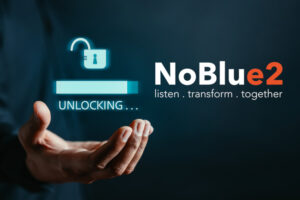There is no doubt that workplaces have fully embraced hybrid working. As a result, we are all adjusting to new ways of working. One of the biggest impacts has been the need to adopt different methods of business communication.
Where staff are permanently, or even occasionally, working from home, it is difficult for salespeople to visit them in an office or get in touch with them by phone. Face-to-face selling and telemarketing were suffering a slow decline anyway, but they have even less relevance in our new hybrid-working world. So, what other options do you have when trying to contact prospects? How can you best get your business message across? And how can you ensure your business communications have impact?
Digital Has Become the Norm for B2B Communications
Hybrid and homeworking are here to stay. In May 2022, 30% of the UK workforce were working from home or operating a hybrid approach. As such, more than two years after the pandemic struck, digital has had to become the primary means by which Britain’s office workers communicate with each other, as well as with their suppliers and customers.
Overnight, businesses had to find new ways to reach their customers. The pandemic accelerated digital transformation strategies and traditional barriers to transformation were quickly and easily surmounted. Suddenly, it wasn’t so necessary to keep legacy software, or put a project off because the budget or implementation timescales weren’t right.
Instead, digitalisation strategies were actively stimulated. As the pandemic struck, the video calling platform Zoom saw an increase in UK downloads of its software of 2000%. And with people initially forced to work from home, there was a seeming longing for brand interaction. Email marketing was the natural recipient of this trend and open and click through rates were stimulated.
Aside from the obvious increased uptake of video calling and email, there was growth in other areas too. One in three companies began using live chat and interactive voice response for the first time.
Reaching Prospects and Building Relationships
Establishing and building relationships with new contacts can be hard through digital means. Not only do your salespeople need to get through to the right people in the first place, but they also need to be able to successfully nurture a relationship. This means developing a good rapport with buyers that they can use as the foundation on which to build a future commercial relationship.
With all of us communicating so much more by email and video call though, there’s a lot of digital noise. Cutting through that is challenging. When your contacts aren’t in the office – or aren’t there as often – they are much harder to reach. Even if you know who you want to speak to, not all businesses have effective call-forwarding, or will not give out home or personal mobile numbers to cold callers.
On top of that, it’s more difficult to establish trust via virtual methods of communication. With a back-and-forth email conversation, it takes longer to get to know contacts. Subtle nuances in email are notoriously missed – or worse, taken completely wrongly. Even video calls have their limitations. With homeworking, there’s the risk that others in the house will hog the available bandwidth, resulting in a deteriorated business call.
Embracing Digital in Your Business Communications
Despite the difficulties that the pandemic has presented, and the digital noise that has been created, there are ways for companies to embrace digital and enhance their business communications.
Inbound marketing is more relevant than ever now. Inbound marketing is about publishing content that resonates with your audience to your website, social media and other digital channels. Via blog posts, infographics, video, testimonials, case studies, email marketing, gated downloadable white papers and eBooks, and more, you can demonstrate your capabilities, become a thought leader, and validate why others chose you.
Much of the social proof and content marketing helps drive prospects to your website. Once there, you need to guide their journey so that you provide them the information they need to help them move through your sales funnel. Aside from the content, there are other digital communications methods that can help. Live chat is great – especially where it’s managed by real people – members of your team who can provide great interactions – rather than with bot-generated answers that just leave you going around in circles.
To optimise marketing communications, it’s best to use your own CRM data. Email marketing use is high in B2B marketing – with 81% of businesses saying it is their most used form of content marketing. While spam in email marketing is the bane of our lives, by building up a following of people who are genuinely interested in your product or service, you can email them relevant updates. Technology can help you to refine your data and segment it better. With regular, consistent – but not too frequent – emails you can successfully target, upsell and cross sell based on previous purchases, sending automated personalised offers and discounts.
For those that prefer to call, interactive voice response is another technology that is increasingly being used to help customers. Some of today’s tools provide a superior experience – that really delivers great benefits for customers. It’s a far cry from the overly simplistic “Press 1 for Sales”.
Customer complaints abound on social media – about poor service, the inability to reach a human, or being kept on hold for hours. When people are unhappy, they tell others – but they don’t tell anywhere near as many when they’re pleased. So, it’s important that you limit their dissatisfaction and keep them happy. At the heart of this is the ability for every functional area of your company to access the same data on your customers. From the customer’s point of view, they are interacting with you – the company – and so they expect you to know all about them. Yet, according to their touchpoints, your warehouse, marketing department, and accounts staff will each potentially know very different information. That is not your customer’s concern. But it is yours. Ensuring customer-centricity by using a unified database that serves the entire company – regardless of function – is key.
ERP Systems Facilitate Better Business Communications
Digital is now the lifeblood of business communications. An ERP system provides a single database that sits at the core of your company and ensures every user accesses a single ‘source of truth’.
If deploying a new ERP system is the next stage in your fast-tracked digital transformation, contact us today for a free business consultation or a quote for Netsuite ERP.










